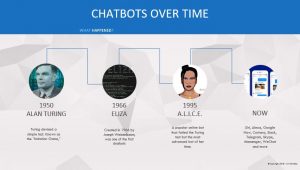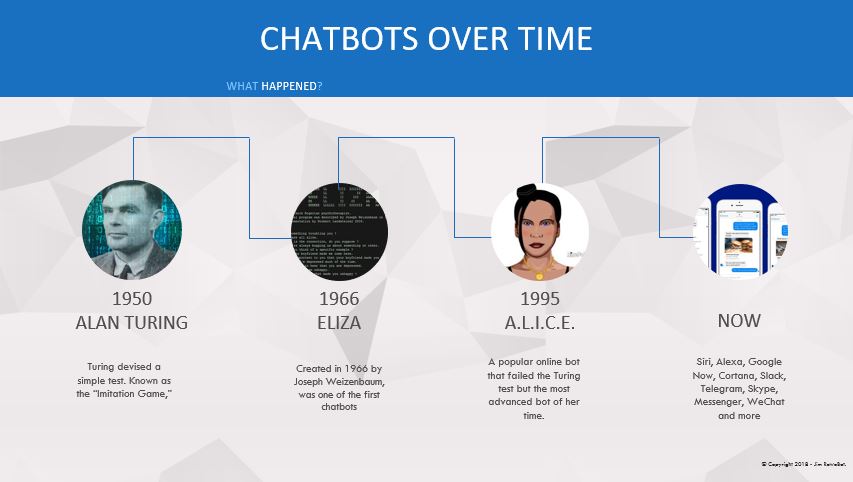Chatbots: 2019 and Beyond
With quickly developing technologies and improved AI, chatbots are getting more and more traction as a key customer-facing interface that many brands are starting to explore.

Where do I start if I want to explore chatbots?
There are a huge variety of platforms out there – Bot Analytics, Manychat, Amazon lex, all these tools can make existing platforms do a lot more. One key platform that is conducive to chatbot compatibility is Facebook Messenger.
Using Facebook Messenger chatbots
- 20bn Facebook messages are sent between customers and businesses each month
- There are a growing number of integrations, such as Shopify – you can link Messenger directly into your sales systems
- 300,000+ chatbots now on messenger, up from 100,000 in 2016
- Takes advantage of the community you already have on your Facebook channel
In the US, chatbots on messenger are used widely. There are pockets in Europe, but it’s not widely used in the UK yet. This is a key opportunity for brands to use another avenue to keep customers happy and provide a way customers can get quick answers. Two companies doing this well include:
Booking.com
- A clever bot, understands user intent
- Simple and effective
Lidl
- A niche bot, you’d tell it what food you’re eating tonight, and it will give you the best wine to pair with that meal
So, which Chatbot is best?
It depends on what is required of the chatbot, and precisely what needs to be achieved with the introduction of the bot. Chatbots can be split into three categories:
- Simple: Decision tree based, moves conversion down a pre-programmed route to a CTA. It has a limited number of questions, but this can work to reduce the number of calls, emails and messages.47% of shopping centre responses have been reduced, such as queries to do with opening times, store locations, etc. This has been leaving staff free for planning ahead and other key tasks.
- Integrated: A bot that collects and sends data, such as email addresses, products the customer is interested in. It can deliver data in seconds and help with basic to mid-level queries.
- AI: High end, understands intent and context, can handle errors and can reference previous items further back in the chat. Booking.com is an example of this.
What’s next for Chatbots?
- 2-5 years – Chatbots are going to see steady growth, as they become more and more useful to people, and businesses catch onto the benefits they can bring.
- 5-10 years – Voice search will become more sophisticated. As Jim explains, “I’ve caught my daughter doing her maths homework on it several times, and I’ve used it to set a timer for something in the oven, but beyond that, [voice search] sort of gets to the end of its use. The amount of investment seen over the last few years will mean voice search is likely to expand and become much more widely used and sophisticated in the coming years.”
- 10+ years – Advanced AI that can deliver highly refined answers and handle complex queries. It’s likely that there won’t be an area of our digital lives that won’t be touched by bots.
Find out more about Jim Rowe-Bot’s chatbot services and find out why businesses need chatbots now.
Read more Leicester Digital Live talks, such as Judith Lewis’s Content Marketing and Social Amplification or Jason Miller’s Intersection of Creativity and Search.




